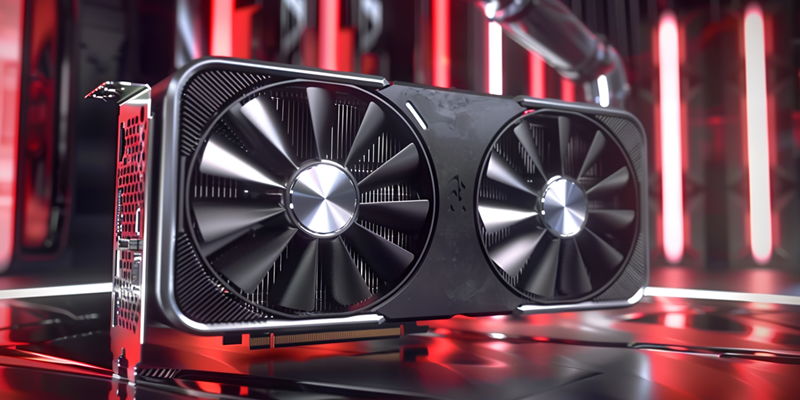NVIDIA’s R555 driver update heralds a new era for AI performance, positioning its hardware suite – the GeForce RTX GPUs, RTX PCs, and RTX Workstations – at the vanguard of AI computational prowess.
Delivering Unprecedented AI Efficiency
Optimizing Large Language Models
With the R555 driver update, NVIDIA has focused on optimizing how GeForce RTX GPUs handle Large Language Models (LLMs). By incorporating support for DQ-GEMM metacommands, the GPUs can now process data more swiftly, utilizing INT4 weight-only quantization. This approach is not only cost-effective but also energy-efficient, tapping into the surplus computational potential within these GPUs. The result is a seamless execution of LLMs essential for the burgeoning field of Generative AI. This efficiency is a testament to NVIDIA’s push towards synergizing hardware power with sophisticated AI algorithms.
Improvements in Speed and Precision
The introduction of new RMSNorm normalization methods and specialized attention mechanisms dedicated to state-of-the-art models such as Llama 2, Llama 3, Mistral, and Phi-3 crystallizes NVIDIA’s commitment to AI innovation. These updates also include in-place KV attention updates and support for GEMM operations on tensors with non-standard sizes, reducing the computational overhead and enhancing the output precision. Benchmarks indicate that these innovations triple the performance in terms of speed for model operations involving both INT4 and FP16 types. This significant leap ensures that NVIDIA’s products can handle the most complex AI tasks with relative ease.
Setting a New Standard in AI Technology
Elevating Consumer AI Applications
The advancements heralded by the R555 drivers have far-reaching implications, transcending LLMs to benefit a whole gamut of consumer AI applications. NVIDIA’s technology, such as DLSS Super Resolution and RTX Video, relies on the Tensor Cores embedded within their GPUs. The tripling of AI capabilities means these applications can perform with unprecedented speed and efficiency. Users can now enjoy smoother gaming experiences, more realistic virtual environments, and more agile video processing—all thanks to the robust foundation provided by the enhanced AI performance of the R555 driver-equipped hardware.
Future-Proofing NVIDIA’s Technological Dominance
NVIDIA’s latest R555 driver update marks a significant milestone in the domain of artificial intelligence, dramatically enhancing the capabilities of its advanced hardware range. This suite includes the powerhouse GeForce RTX graphics processing units (GPUs), along with the high-caliber RTX personal computers (PCs) and the formidable RTX Workstations designed for professional use.
These hardware solutions are now at the forefront of AI computational capacity thanks to the improvements rendered by the new driver. The technological advancements embedded in the update propel NVIDIA’s offerings to the pinnacle of the AI industry, providing users with unprecedented performance levels. This leap forward is particularly pivotal for professionals and enterprises that rely heavily on GPU acceleration for various AI applications, including deep learning, data analysis, and complex simulations.
By consistently pushing the boundaries with updates like the R555, NVIDIA not only reiterates its commitment to innovation but also solidifies its role as a leader in the ever-evolving field of artificial intelligence. As NVIDIA continues to refine and optimize its hardware through these driver enhancements, users can expect their RTX GPUs, PCs, and Workstations to handle even the most demanding AI workloads with ease, thereby making them indispensable tools for AI experts and enthusiasts alike.

